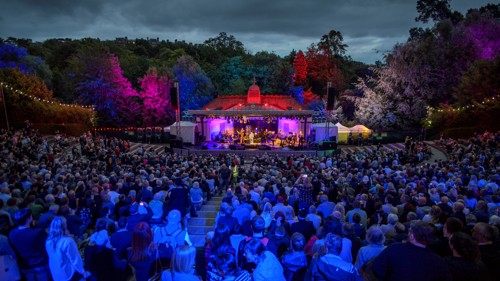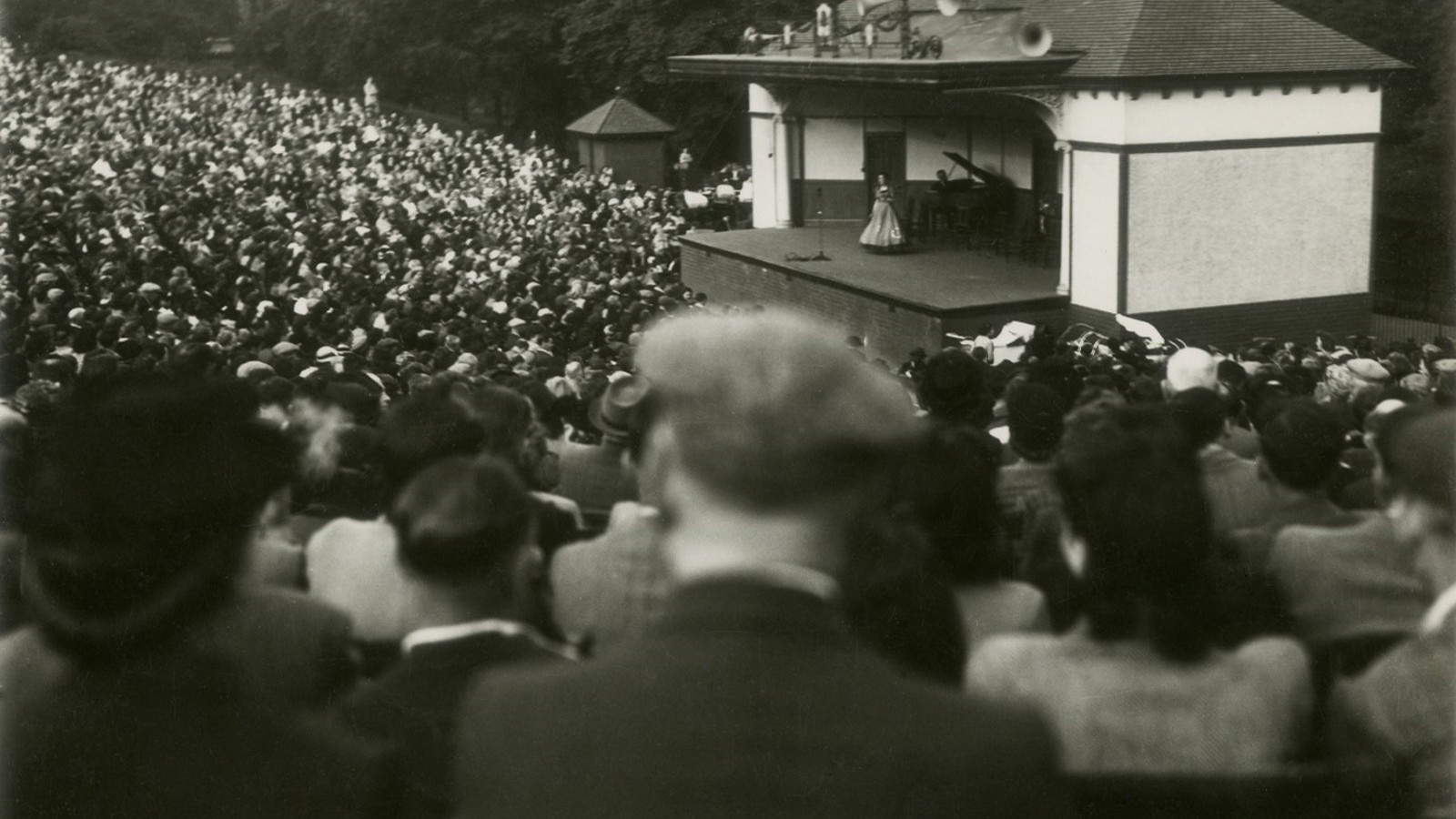Kelvingrove Bandstand celebrates 100th anniversary

Glasgow’s historic Kelvingrove Bandstand and Amphitheatre is celebrating its 100th anniversary year with a specially recorded Squeeze concert, Doors Open Day events and the launch of a new webpage dedicated to the milestone.
The English rock outfit’s gig on 1 August will be recorded by BBC Radio Scotland for future broadcast as part of the 2024 Summer Nights at the Bandstand, which will bring music stars and bands to the Kelvingrove Park venue during its centenary year.
The concert series, kicked off by Gabrielle on 23 July, features the likes of Johnny Marr (25 July), Emeli Sande (27 July), Ocean Colour Scene (31 July), Echo and The Bunnymen (9 August) and Bananarama (10 August).
Coincidentally, 2024 also marks promoter Regular Music’s 100th Summer Nights at the Bandstand gig.
The acts involved in this year’s Summer Nights at the Bandstand are the latest in a long line of iconic performers who have entertained crowds at Kelvingrove Bandstand.
The Jaygars, Hue and Cry, The Bluebells and Tom Jones are among the famous faces who have wowed audiences at the West End venue over the decades.
Kelvingrove Bandstand is managed by Glasgow Life, the charity that leads culture and sport in Glasgow.
As part of the 100th anniversary year celebrations, people will also have a chance to see behind the scenes and step onto the famous stage during Doors Open Day events on 21 and 22 September. The Doors Open Days will also feature free live music by Glasgow-based artists.
While Kelvingrove Bandstand is renowned as a live music venue, its history is, perhaps, less well-known.
To mark the anniversary, its remarkable story is being told through research, images and film on a new Kelvingrove Bandstand 100th anniversary webpage on the Glasgow Life website.
The current bandstand is Kelvingrove Park’s third and the new webpage reveals the history of each, the origins of which can be traced back to the opening of the park in 1853.
For the first two decades, Kelvingrove Park was designed as a place to walk, rest and enjoy nature.
That changed in 1872 when the Council decided people would also appreciate music and the 25th Lanarkshire Rifle Volunteers became the first band to perform in Kelvingrove Park.
The Sun Foundry built the park’s first bandstand in 1875. It opened the following year in an extension of the park where the Lord Kelvin statue now stands.
Concerts at the city’s new attraction became incredibly popular, with 10,000 people often attending on Saturdays.

In 1888, the bandstand hosted live music as Kelvingrove Park staged the first of the Glasgow International Exhibitions.
It again hosted musical performances during the second Glasgow International Exhibition in 1901.
The original structure was then replaced with a traditional bandstand and amphitheatre beside the River Kelvin for the 1911 Glasgow International Exhibition.
When cinema and radio arrived in the 1920s, Kelvingrove Bandstand offered new forms of entertainment to keep pace with the competition, hosting costumed concert parties, choirs and orchestras.
The new events were so successful, it was decided the second bandstand was not big enough.
As a result, a proposal was put to the Council in 1923 to build a new ‘super bandstand’, with seating for 4,500 and standing room for another 15,000. This plan was rejected, but a scheme to build the third, and current, Kelvingrove Bandstand was approved.
The new venue was built in 1924 by the Glasgow Corporation Parks Department. It opened in May 1925 and provided entertainment throughout the 1920s and 1930s.
As television became popular in the 1950s and 1960s, regular concerts came to an end. Youth counter-culture then gave the bandstand a new lease of life – a ‘Ban the Bomb’ anti-nuclear demonstration brought together 2,000 people.
Rock and pop music burst onto the bandstand in 1965 when one of Glasgow’s top acts, The Jaygars, took to its stage.
Kelvingrove Bandstand then became famous for pop music festivals such as Radio Clyde’s first Kelvingrove Free Music Festival in 1978.
After the glory days of the 1970s and 1980s faded, the venue was threatened with closure in 1992 before being saved by a local community campaign.
In the following years, however, Kelvingrove Bandstand fell into disrepair. When the venue was forced to close in 1999, it was repeatedly vandalised and its condition was described as ‘critical’ by the Scottish Buildings at Risk Register.
A plan to refurbish the facility was then developed by a partnership involving Glasgow Building Preservation Trust, Glasgow City Council and Glasgow Life, which secured £2.1 million of development funding.
Work began in August 2013 to ensure the project was complete in time for the Glasgow 2014 Commonwealth Games.
Glasgow band Belle and Sebastian performed the first gig at the newly restored Kelvingrove Bandstand in July 2014. Within five years, it had hosted performances by the likes of Steve Earle, The Waterboys, Tom Jones, Van Morrison, Primal Scream, Eddi Reader, Texas, Pixies, KT Tunstall and The Human League.
In recent times, the bandstand has welcomed Belinda Carlisle, Happy Mondays, Anastacia, Del Amitri, Sophie Ellis-Bextor and Sugababes, among others.
The Category B-listed building is the only original bandstand left in Glasgow and seats up to 3,000 people.
Billy Garrett, Director of Culture, Tourism and Events at Glasgow Life, said: “Kelvingrove Bandstand is an iconic and central part of Glasgow’s cultural past, present and future. The bandstand has hosted so many legendary concerts and events over the last 100 years, which have earned it a reputation at home and abroad as a truly special live music and entertainment venue. It is fitting that the public will be able to enjoy more live music at Kelvingrove Bandstand and learn about the venue’s incredible history in celebration of its centenary year.”
Anyone who would like to submit photographs of or videos taken at the Kelvingrove Bandstand to the Kelvingrove Bandstand 100th anniversary webpage can email copies to amcv@glasgowlife.org.uk.
